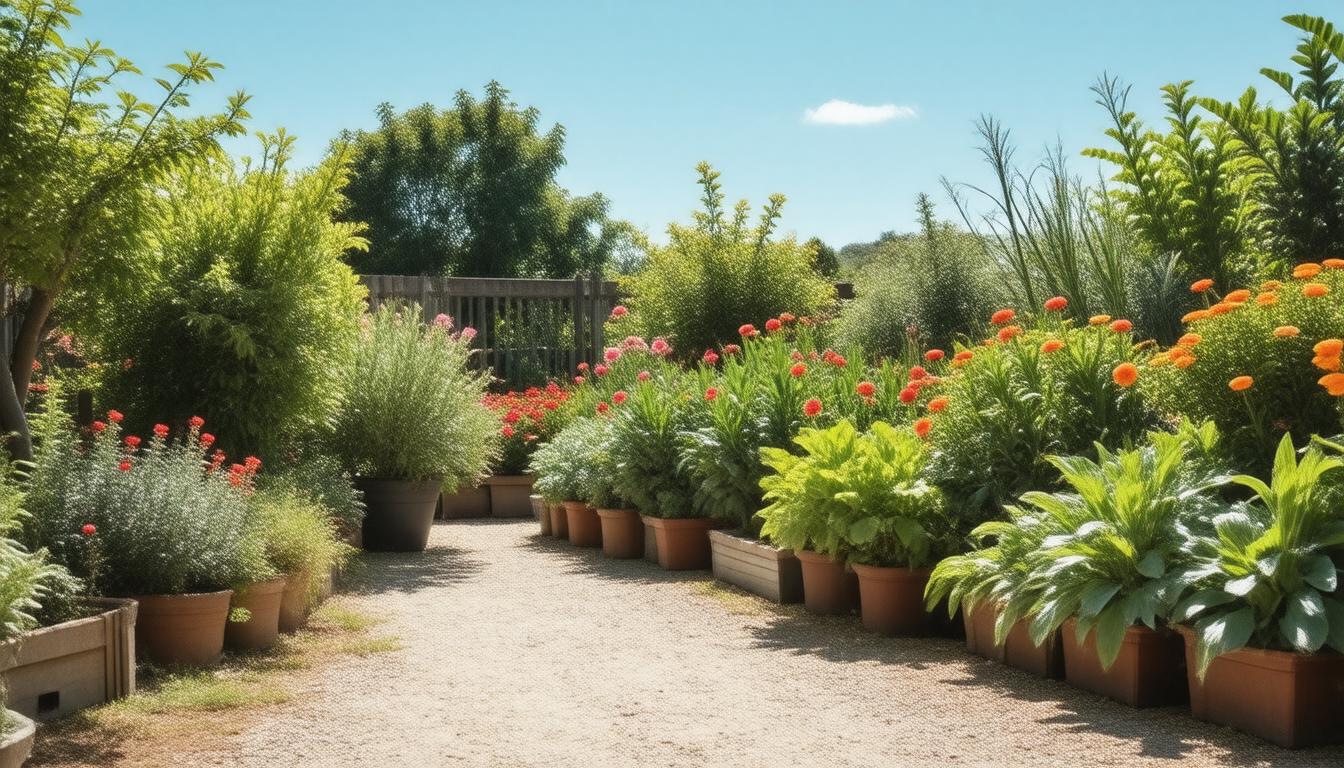Gardening is not just a hobby; it’s an opportunity to create a vibrant outdoor space that enhances your home and well-being. Whether you are a seasoned gardener or a beginner looking to cultivate your green thumb, maximizing your garden’s potential with these outdoor plant tips can lead to a flourishing landscape. In this article, we will explore essential strategies ranging from understanding your garden’s zone to seasonal maintenance, helping you create a thriving ecosystem in your backyard. Let’s dig deep into these valuable tips to ensure your garden reaches its fullest potential!
Key Takeaways
- Understanding your garden’s hardiness zone is crucial for selecting the right plants.
- Choosing native plants can enhance your garden’s beauty while promoting local biodiversity.
- Soil preparation is key; enrich your soil with compost to ensure optimal plant growth.
- Implement a consistent watering schedule to maintain healthy outdoor plants without overwatering.
- Regular pest control and seasonal maintenance are essential to keep your garden thriving.
Understanding Your Garden’s Zone
Understanding your garden’s zone is crucial if you want to maximize your garden’s potential with these outdoor plant tips. Each gardening zone is defined by its climate, including temperature ranges and seasonal variations, which directly influence the types of plants that will thrive in your specific area. For instance, if you live in a warmer climate, you might favor drought-resistant perennials, while those in cooler zones may opt for hearty vegetables that can withstand frost. By identifying your garden’s zone through tools like the USDA Plant Hardiness Zone Map, you can make informed decisions about which plants to select, ensuring that they not only survive but flourish in your garden. This knowledge is the foundation for building a beautiful landscape that reflects your personal style and maximizes your garden’s growth potential.
Choosing the Right Plants for Your Space
When it comes to creating a thriving outdoor space, knowing how to maximize your garden’s potential with these outdoor plant tips is essential. The first step in this process is understanding the unique climate and soil conditions of your garden. Selecting plants that are well-suited to your local environment will not only enhance the overall aesthetic of your space but also ensure that your garden thrives. Consider native plants, as they often require less water and maintenance while providing habitat for local wildlife. Additionally, pay attention to sun exposure and the size of your garden area; taller plants can be placed at the back of borders to create depth, while smaller plants can brighten up the front. Don’t forget to incorporate a mix of perennial and annual plants for continuous blooms throughout the seasons. With these strategies, you can harness the full potential of your garden, creating a beautiful and sustainable outdoor sanctuary.
‘The love of gardening is a seed once sown that never dies.’ – Gertrude Jekyll
Soil Preparation and Enrichment Techniques
Soil preparation and enrichment techniques are essential for anyone looking to maximize their garden’s potential with these outdoor plant tips. The health of your plants largely depends on the quality of the soil they grow in, making it crucial to invest time and effort into creating a rich, nutrient-dense environment. Start by testing your soil’s pH and nutrient levels, as this will provide insight into what amendments may be needed. Incorporating organic matter, such as compost or well-rotted manure, can significantly improve soil structure, enhance moisture retention, and provide essential nutrients for your plants. Additionally, consider crop rotation to prevent nutrient depletion and combat pests and diseases. By implementing these soil preparation techniques, you foster a thriving ecosystem, which not only benefits your garden’s growth but also helps to maximize your garden’s potential with these outdoor plant tips.
Effective Watering Strategies for Outdoor Plants
When it comes to gardening, understanding effective watering strategies is crucial to maximize your garden’s potential with these outdoor plant tips. First, consider the timing of your watering sessions; early morning is ideal as it minimizes evaporation and allows plants to absorb moisture throughout the day. Additionally, implementing a deep watering method encourages roots to grow deeper into the soil, enhancing drought resistance and overall plant health. It’s also vital to monitor the weather—if rain is forecasted, delay your watering schedule to prevent over-saturation. Using mulch can help retain soil moisture, reduce weed growth, and regulate temperature, promising an ideal environment for your plants. Lastly, investing in a soaker hose or drip irrigation system can save both water and time while ensuring your plants receive a consistent supply of moisture. By following these effective watering strategies, you can nurture your outdoor plants, ensuring they thrive and grow to their full potential.
Pest Control and Plant Health Maintenance
Maintaining a healthy garden requires a balanced approach to pest control and plant health. To truly maximize your garden’s potential with these outdoor plant tips, it’s essential to understand the relationship between pests and plants. Integrated Pest Management (IPM) is a strategy that not only helps manage pests effectively but also promotes plant health. Begin by regularly inspecting your plants for signs of pests and diseases; early detection is crucial. Utilize natural predators like ladybugs or lacewings, which can help control common garden pests without the need for harsh chemicals. Furthermore, keeping your garden clean by removing debris and dead plants can reduce pest habitats. Don’t overlook the importance of soil health; healthy soil leads to resilient plants. Adding organic matter, like compost, enriches the soil, encouraging strong root systems and increasing your plants’ ability to fend off pests. Finally, be mindful of your watering practices – over or underwatering can stress plants, making them more susceptible to infestations. By implementing these outdoor plant tips, you can create not only a vibrant garden but also a sustainable ecosystem that thrives.
Seasonal Care and Maintenance Tips
Maximize your garden’s potential with these outdoor plant tips by implementing essential seasonal care and maintenance strategies. As the seasons change, so do the needs of your plants. In spring, focus on soil preparation and selecting the right plant varieties for your garden’s climate. Summer is the time for regular watering and mulching to retain moisture and control weeds. As fall approaches, it’s crucial to prune and prepare your plants for winter, ensuring they have the best chance to thrive come spring. Finally, during the winter months, protect delicate plants from frost and heavy snowfall. By following these tips, you can significantly enhance your garden’s performance and enjoy a vibrant outdoor space year-round.
Frequently Asked Questions
What does it mean to understand my garden’s zone?
Understanding your garden’s zone involves knowing the climate and temperature conditions specific to your area. This information helps you select plants that will thrive in your local environment.
How do I choose the right plants for my garden space?
Choosing the right plants involves considering the amount of sunlight, soil type, and the size of your garden space. You should select plants that are suited to these conditions for successful growth.
What soil preparation techniques should I use for my outdoor plants?
Soil preparation techniques include testing the soil pH, removing debris, adding organic matter like compost, and ensuring proper drainage to create a nutrient-rich foundation for your plants.
What are the best watering strategies for outdoor plants?
Effective watering strategies include watering deeply and less frequently, using mulch to retain moisture, and timing your watering sessions for early morning or late afternoon to reduce evaporation.
How can I maintain plant health and control pests effectively?
To maintain plant health and control pests, regularly inspect your plants for signs of trouble, practice crop rotation, use natural pest control methods, and ensure proper fertilization and watering.




